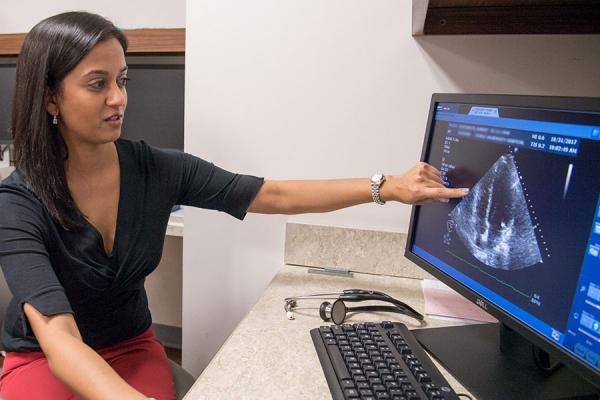First Of Its Kind Approach Speeds Up Early Diagnosis of Deadly Form of Heart Failure
Posted on 09 Jun 2025
Pulmonary arterial hypertension (PAH), a life-threatening form of heart failure linked to elevated blood pressure in the lungs, is frequently missed due to nonspecific symptoms like fatigue and breathlessness. Early diagnosis is crucial to improving outcomes, yet many patients are referred for treatment only when the disease is advanced. To address this gap, physicians at the Lewis Katz School of Medicine at Temple University (LKSOM, Philadelphia, PA, USA) have developed an automated screening tool called the Virtual Echocardiography Screening Tool (VEST), which integrates with electronic medical records (EMRs) to identify high-risk patients earlier.
This novel solution represents a first-of-its-kind advancement in pulmonary vascular medicine. Their work, published in the American Heart Journal, marks a significant step forward in PAH screening by eliminating the need for manual score calculations and embedding screening directly into standard hospital workflows. VEST leverages echocardiogram data, which estimates pulmonary artery pressure and highlights cardiac changes indicative of PAH, to generate automated risk scores.

Previously, the team showed that VEST could detect PAH risk more than 200 days before patients were referred to specialist centers. In this latest study, they developed and embedded an EMR-based VEST algorithm and tested it on data from nearly 5,000 patients who had received echocardiograms. The researchers compared VEST scores generated automatically by the EMR-integrated tool with manually calculated scores. They then assessed whether high-risk patients identified by the tool had been referred for confirmatory testing or specialist care.
Among the patients flagged as highest risk, the severity of pulmonary hypertension was substantial, but a third had never been referred to a pulmonary hypertension (PH) specialist. When referrals were made, nearly all patients received confirmatory right heart catheterization—the gold standard for PAH diagnosis—and were diagnosed with serious disease. The findings demonstrate VEST’s ability to identify patients with PAH earlier, supporting timely referral and potentially life-saving treatment.
Without referral, very few high-risk patients had undergone proper diagnostic testing or received treatment, underscoring the tool’s potential to close a critical gap in care. By automating the scoring process and embedding it in EMRs, VEST can become both accessible and scalable across healthcare systems. The goal is widespread adoption to ensure more patients benefit from early detection and intervention, thereby improving survival and quality of life.
“Our EMR-based VEST tool proved highly accurate in identifying individuals likely to have PAH,” said Anjali Vaidya, Professor of Medicine at the Lewis Katz School of Medicine and lead author on the new study. “VEST has already been adopted at Temple, and we are now in the process of collaborating with other centers, nationally and internationally, to facilitate its implementation elsewhere.”
Related Links:
LKSOM














